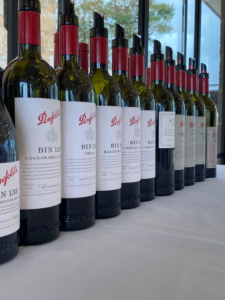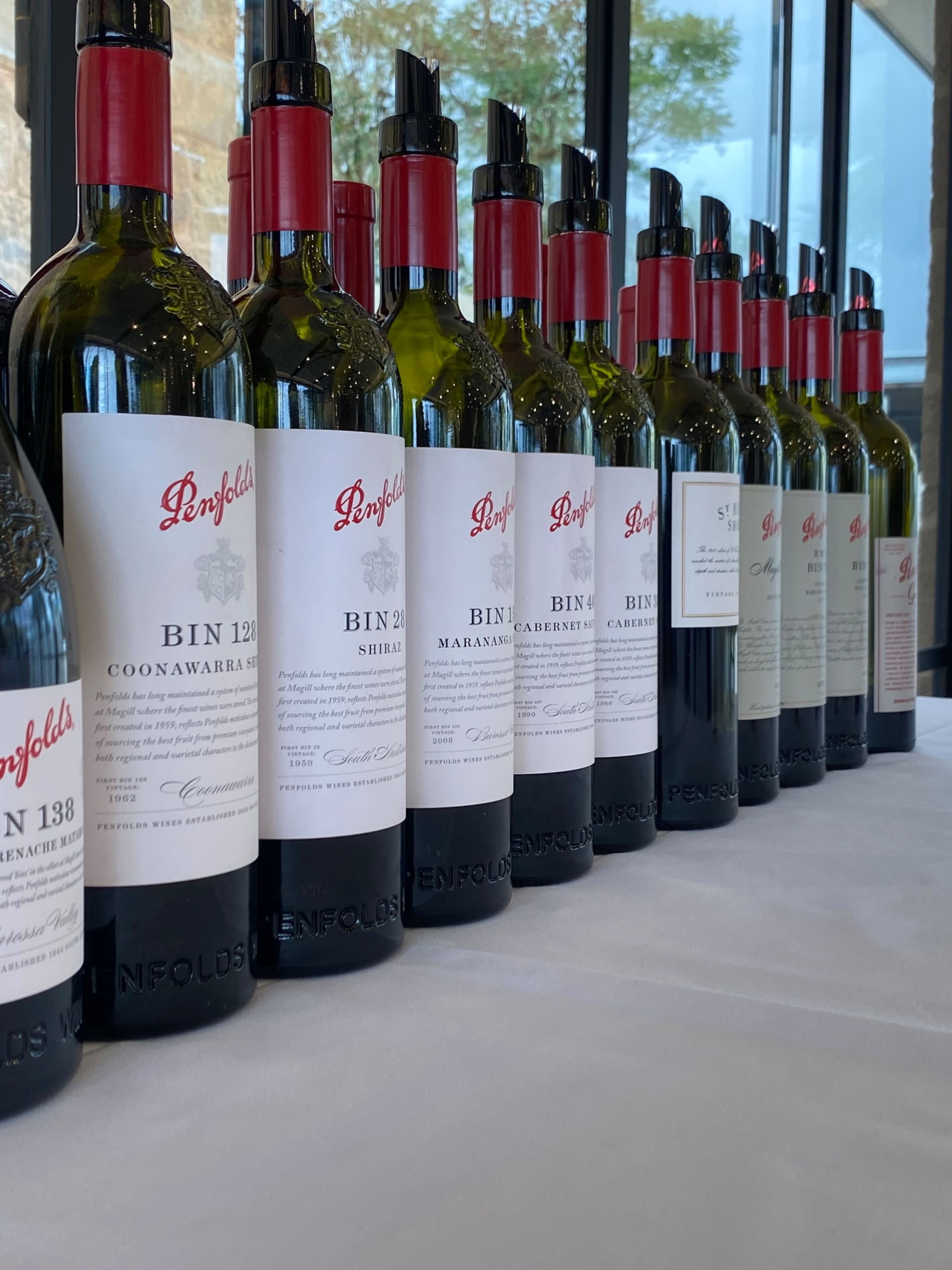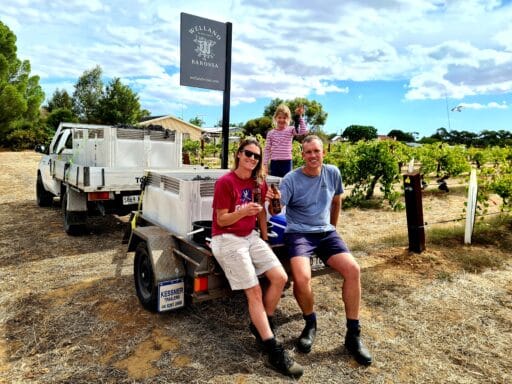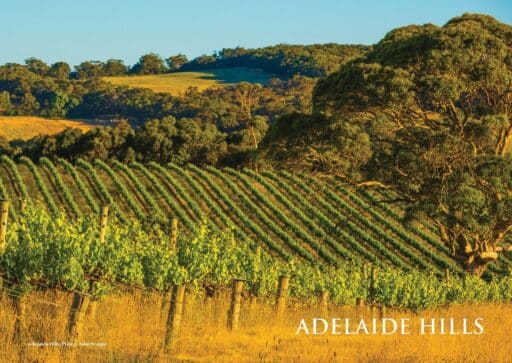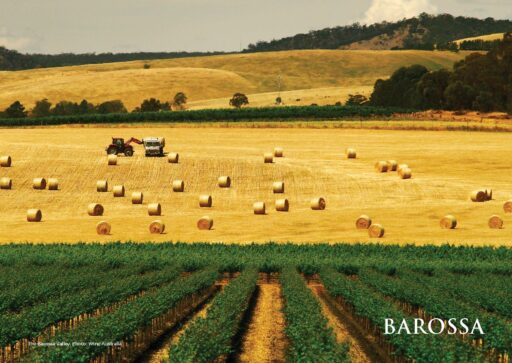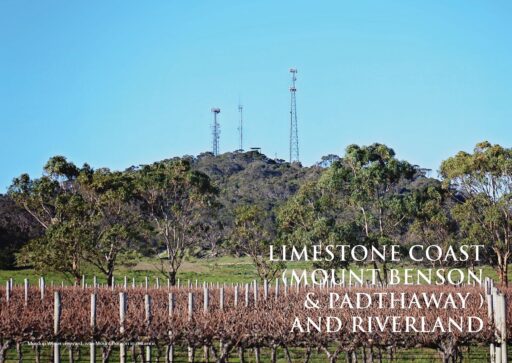After the China shock, it is fair to say that in the Treasury Wine Estates offices at Southbank in Melbourne the release of the new Penfolds vintages today, including the 2017 Grange, are the most keenly awaited in years, if not ever.
As is tradition there are five different vintages on show reaching from the 2021 Bin 51 Eden Valley Riesling back to the 2017 Grange. All the usual stars are there including some new additions – Superblends 802-A and 802-B – Penfolds shot at the classic Australian Cabernet Shiraz blend, which is quickly becoming hot property around the world.
The vintages, and the wines, range in conditions from the cooler and slightly wetter than average 2017, through the hot, dry years of 2018 and 2019, the challenges in 2020 and the potential unicorn year of 2021. Inevitably the success of Penfold’s new releases are judged by the quality of the Bin reds and Grange.
It is undoubtedly a strong vintage for the Penfolds Bins from 2019 with rich and powerful wines supported by measured structure that will drink well over the medium term. Bin 389, Bin 150, Bin 138 and RWT Bin 798 are all impressive releases. 2017 is an interesting vintage for Grange, Peter Gago and his team choosing to opt for 100% Shiraz, on only the 7th occasion, and also only from the Barossa Valley and McLaren Vale. It is not a top vintage but a very good effort and a wine that has retained this label’s long cellaring potential.
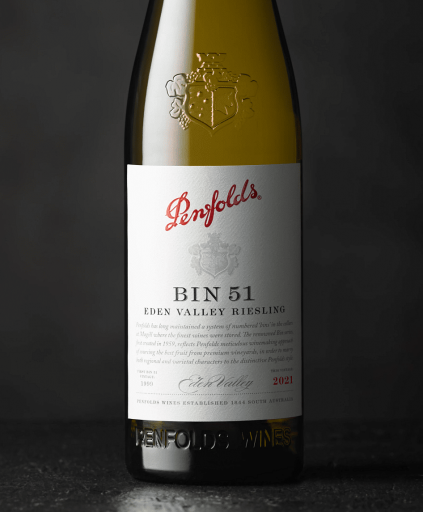
Penfolds Bin 51 Eden Valley Riesling 2021 $40
Ken Gargett – 96 Points
A contender for the wine of the Collection first up. Impressive for the youngest and cheapest wine. This is the best Bin 51 I can remember – it will rank with 2002 and 2005, two other stellar Riesling years, but I think might exceed them. This is a brilliant Riesling.
Colour is very pale gold, limpid. An utterly glorious Riesling nose. Spice, chalk, limes, lemon zest. Lifted and fragrant, intense and yet both delicate and balanced. The texture is like crème brulee. There is a gorgeous softness to the wine, fully backed by vibrant, slightly puckering acidity. Great length here and no let up on the intensity as it proceeds. An immaculate young Eden Valley Riesling. Simply stunning.
Jeni Port – 91 Points
Eden Valley signature florals are as prominent as ever: the scent of jasmine, apple blossom, honeysuckle joined by a rising lemon citrusy aroma. The familiarity with past releases of Bin 51 ends there, well, almost. Yes, this is definitely an Eden Valley riesling of some quality. The purity of citrus and apple gives its provenance away. That floral overlay is captivating, as ever.
However, a closer look at the label’s fine print and the alcohol achieved in 2021 – a lowish 11% – combined with a markedly high acidity – 8.4 grams/litre – tells the other side of the Bin 51 story. This is a wine endowed with a super brisk acidity. Yes, indeedy. I might call it captivating (acid hounds like me highly approve of such things). It plays against a lemon drop, citrus-lime sucking juiciness and soft, baked apple flavours. It picks you right up. Others might call it aggressive at this early stage. I think this debate deserves to be put on hold for a while. Let’s take a look at this wine again a little further down the track, say, three to five years? Of course, I will be drinking it over the next three to five years and then some. That’s riesling for you. Drink now? Drink later? Or, just drink on through? Drink 2021 – 2032
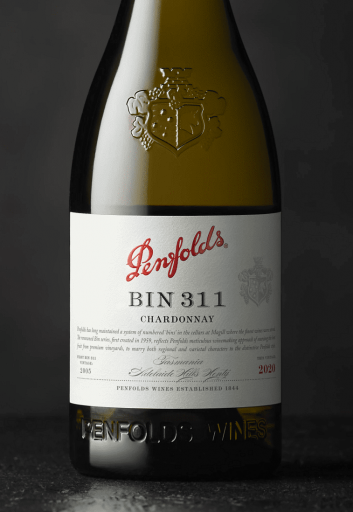
Penfolds Bin 311 Chardonnay 2020 (A$50)
Ken Gargett – 91 Points
Sourced from Tasmania, Piccadilly and Henty, this wine spent 8 months in French oak barriques, 41% new. 2020 has certainly been castigated by critics as a lesser vintage and, while it is hard to argue against that, there are enough regions to produce some top-notch fruit somewhere. Blending regions can help to overcome any perceived vintage deficiencies.
Some depth of gold/yellow in the colour. The aromas include gentle nutty notes, a hint of oak, and of struck match. Nicely balanced and moves towards appealing stonefruit characters – peaches. Tropical notes also emerge on the finish – mango and banana. A fresh style with some very early complexity and a pleasing flick of acidity. Decent length. Exceeds expectations, given the vintage.
Jeni Port – 93 Points
The maker makes no bones of the fact that the sourcing of grapes for Bin 311 is vintage dependent, capitalising on regions that shine in any particular year. In 2020, it was Tasmania, the Adelaide Hills and Henty, cool wine regions all. The logistics in fruit-sourcing sound horrendous. The result is well worth the trouble.
A picture of cool climate linearity, a fine-edged, almost brittle beauty, which belies a solid base of mouth-filling flavours. White peach, grapefruit pith, citrus and pistachio nougat aromas indicate a budding complexity. Some serious intensity on the palate: lemon curd and citrus skin, white peach and a sea salt tang join in with a delicate touch of French oak-inspired oatmeal/oatcake flavours to create a warm, textural mouthfeel.
Highish acidity – 8.4 grams/litre for those at home – creates a firm, pleasing base for the wine and its future. Drink: 2021-2027
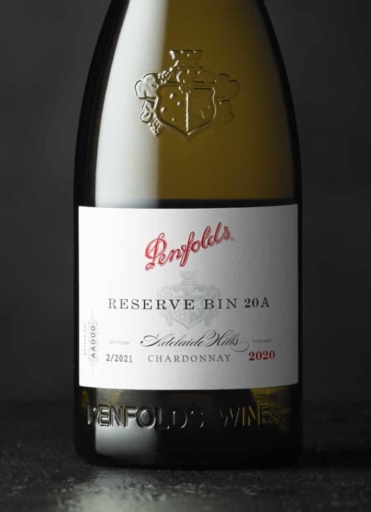
Penfolds Reserve Bin A Adelaide Hills Chardonnay 2020 (A$125)
Ken Gargett – 93 Points
Lately, it seems that Penfold’s have taken their foot off the pedal for Bin A, bringing it more in line with a style we might call Yattarna-lite. A single region Chardonnay from the Adelaide Hills. And in all fairness, the Adelaide Hills had a miserable time in 2020 – think bushfires for a start. It is a credit to Penfold’s that they managed to construct such a good wine. Whole bunch pressed. Some juice pressed direct to barrel to ferment with wild yeasts. 100% malo. Eight months in French oak barriques, 86% new, the rest a year old.
A very pale green/yellow. There is enough to suggest that there is some serious power here, coiled and ready to be unleashed. Top-notch oak still integrating. Peaches, a hint of bacon fat. Fragrant, but it packs power. Good focus and a clean, long finish. With time in the glass, some cashew oak emerged. Should have a good four to six years ahead of it. Undoubtedly a very fine Chardonnay, but not quite what I think of when I think Bin A.
Jeni Port – 92 Points
First came isolated frosts across the Adelaide Hills, followed by a cool November which led into terrible bushfires in December with significant loss of vines. By the time, harvest came in February, yields were down, naturally. But through it all, came a reserved, tense, Reserve Bin A (aka Bin 20A).
Interestingly, in past releases the wine has been associated with characters of white stone fruits, peach and nectarine (to quote previous releases). In 2020, an unusual year let’s face it; it is all about citrus, apple and pear with an inflection – no, make that a firmer presence – of leesy, bready, biscuity-ness. Don’t overchill and there’s a lovely lemon thyme character, too. You can almost imagine this chardonnay as a sparkling blanc de blancs, such is its fine line and delicacy. Oak – eight months in French barriques with 86% new – is nicely controlled, a binding agent lending a hand to the citrussy whole. Drink: 2021-2028
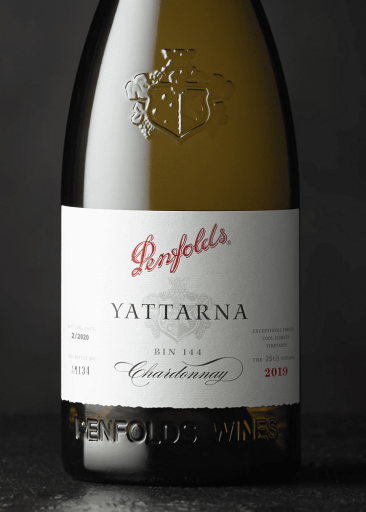
Penfolds Yattarna Chardonnay 2019 (A$175)
Ken Gargett – 97 Points
Penfold’s superstar white and one of this country’s finest Chardonnays. 2019 is a blend of fruit from Tasmania, Tumbarumba and the Adelaide Hills. Eight months in French oak barriques, 55% new, 45% one year old. This is a Yattarna for the ages. Stunning. A lovely light green/gold in colour. The nose is tight but fresh and balanced. There is oak here, but so well integrated. Spices, lemon zest, cashews, the bark of a lemon tree and wet stones. Key to this wine at all stages is the immaculate balance and focus. The wine has drive, tautness, precision and great length, all carried by underlying acidity. Such precision and balance; elegance yet power. With time in the glass, a hint more of the cinnamon-y oak emerged, as did some notes of lime. This year’s clear winner in the Penfold’s Chardonnay stakes. Outstanding. The balance remained, no matter how long the wine stayed in the glass. A long, slow gentle fade, but the intensity continues right through this length. Surely a good ten to fifteen years lie ahead for this wine.
Jeni Port – 95 Points
A picture of intense concentration. Sea spray, oyster shell, white peach, nectarine and the slow curl of grapefruit and lemon zest rise from the glass. Yattarna is surely home to one of the most recognisable chardonnay scents in the country. It’s at once delicate but rich and all-pervasive. Utterly delicious. Builds deceptively, furtively, through the mouth gathering pace and texture. Warm honeysuckle notes, summer fruits, stone fruit kernel nuttiness and nougat run long and deep on the palate. Wrapped in a firm, citrussy acidity, the 2019 Yattarna is mighty good-drinking right now.
A wine forever in progress, Yattarna – otherwise known as Bin 144 – has seen many incarnations in its 25 years. To think that McLaren Vale was once a grape source. Times changed pretty fast as the focus tended towards high altitudes and/or cool, southerly aspects. The 2019 is a blend of Tasmania, Tumbarumba and the Adelaide Hills. The mix is set to change from year to year. In 2019, it stands up to the original project concept, to develop an “ultra-fine” Australian chardonnay. Drink: 2021-2033
Tony Love – 98 Points
Sourced from three regions in three states: Tasmania, Tumbarumba and the Adelaide Hills, crafted into a fully complex style with an alluring chardonnay nose, a sense of apple and pear compote and squeezes of yellow citrus with a background of delicate oak and fallen autumn leaves. You might just want to stay there for a while to take it all in, but the drinking enhances all that has come before: layers and layers, flinty minerals, cedar, grapefruit with sprinkled sweet spices, delicately matrixed oak, fruit, savories and mouthwatering acidity. A wine with great power and commanding class.
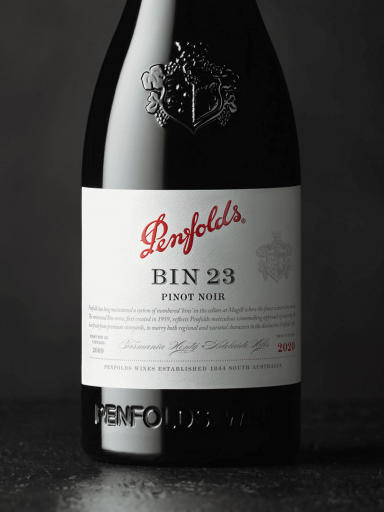
Penfolds Bin 23 Pinot Noir 2020 (A$50)
Ken Gargett – 92 Points
A mate of mine often drops around for a drink. For years, when I would ask what would he like, he’d pick Pinot Noir. He considered himself a pinotphile. Problem was, every single time, no matter how good the Pinot (and I served him some crackers), he’d declare it not up to scratch and want another. I quickly learnt to serve him a Shiraz. The response would always be that this was more like it. This was the sort of Pinot he liked. I have a strong suspicion that this year’s Bin 23 would be a Pinot he’d love.
Penfold’s use a mix of Pinot clones and source the fruit from Tasmania, Henty and the Adelaide Hills. Seven months in French oak barriques, 24% new. 20% whole bunch. Pale red with notes of purple. Some spicy oak here – a fraction too much at the moment but give it time. Florals, spices, chocolate, black cherries, dry herbs. This is a big and full-flavoured style of Pinot. Nothing wrong with that. One gets the feeling that this wine might be fighting the vintage conditions and has ceded elegance for power and force, which is perhaps not the ideal scenario for Pinot. A very fleshy style. A burly style of the heartbreak grape. Grippy tannins, real concentration, firm with decent length. If you like this style then your score would be very high indeed; if you prefer more grace and elegance, then perhaps not so much. So for me, I went midway which probably leaves no one happy.
Jeni Port – 94 Points
Started life as a mostly Adelaide Hills pinot noir but these days Bin 23 is multi-regional – very Penfolds – with grapes sourced from Tasmania, Henty and the Adelaide Hills. The latter’s role has been no doubt downgraded due to the devastating bushfires of that summer.
There is good reason why pinot noir now ranks in the company’s annual collection release. It’s a smart, suave wine with super attractive cool climate credentials matched with some unaccustomed ripeness and alcohol levels (13.5%). The result is pure, delightful drinkability. Black cherry up front, pot pourri, musk mix with wild strawberry scents. It is of the outdoors and kitchen gardens. Runs smooth across the tongue, fleshy in texture and melded by spice, ripe sweet cherry fruits and pomegranate.
The overall impression is autumnal, of the earth, the leaves and the forest floor. And very nice it is. Drink: 2021-2027
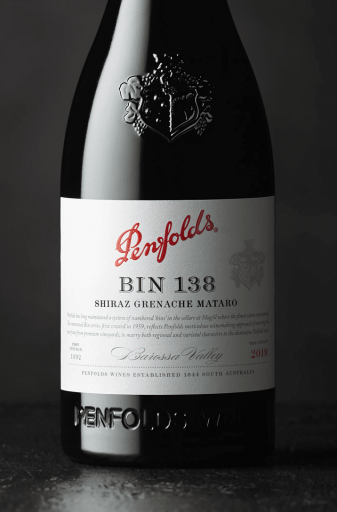
Penfolds Bin 138 Barossa Valley Shiraz Grenache Mataro 2019 (A$60)
Ken Gargett – 94 Points
The blend is 70% Shiraz, 17% Grenache and 13% Mataro (Mourvedre), much of which comes from vineyards planted over a century ago. Matured in a mix of older French (80%) and American (20%) oak.
Colour is dense, dark purples. The aroma gives enticing notes of chocolate, dry herbs, mocha, spices, cassis, cocoa powder and mulberries. Powerful and rich and muscular, the balance ensures it never seems too heavy. On the palate, notes of molten chocolate and fruitcake. Rich and juicy, this is still very young. Lot of tannins, through to a firm finish. Impressive length. Structure is excellent. The wine might be firm, but there is a lovely seductive texture. Surely a decade or more ahead of it. Towards the finish, notes of soy sauce and beef stock appeared. Love this wine.
Jeni Point – 93 Points
From a hot Barossa vintage comes a mighty fine Bin 138. Originally inspired by the wines of the Southern Rhone, it lives up to that expectation with a full-bodied, rich and flavoursome beat. The sweet confection qualities of the past, often an annoying interruption, to be frank, are but a memory.
Warm, summer earth, black plums, chocolate-covered cherries, dusty oak. Shiraz takes the lead as usual – 70% – and it’s sourced from the Kalimna vineyard (older vines are preferred for Bin 138) which lends itself to dense, concentrated earthy fruit. The winemaker suggests this wine is “Barossa translated differently.” Not sure what he means. This is how I like the Barossa, an expression of ripeness and boldness, but delivered within a taut frame of tannins that finishes clean. Maybe not as long as previous releases, but it hits the spot. Drink: 2021-2027.
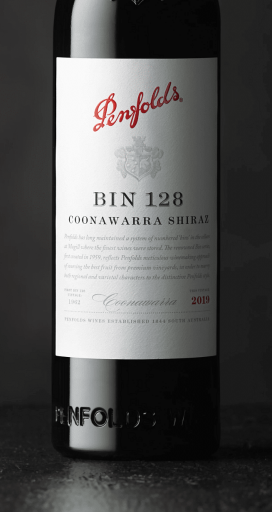
Penfolds Bin 128 Coonawarra Shiraz 2019 (A$60)
Ken Gargett – 93 Points
100% Coonawarra, 12 months in French hogsheads, 24% new, 33% one-year-old and 43% two-year-old. Magenta colour. The nose gives us a mix of blackfruits and ripe raspberries. Chocolate and mint. A midweight style. Slightly furry tannins. Really gets a bit exciting when we start to see some blueberries emerge towards the finish. Good acidity, decent length. Some spicy, nutty oak is on show at this early stage. An attractive style which should age well. With time in the glass, more and more generosity emerged, but the wine always retained a degree of elegance.
Jeni Port – 90 Points
A wine still coming together, working it out. Each piece of the wine puzzle – fruit, tannins, oak – revolves around the other, but is yet to mesh fully. And amongst it all, there is a level of savouriness that builds. Interesting Bin 128 here.
Black and blue fruits, violet, blackberry leaf, roasted coffee grounds introduce a wine very different in style to the general Penfolds portfolio. Coonawarra lends itself easily to structure, a linear quality, fine in tannins and black fruited intensity. It’s all here. Set amongst the herb notes, the berries and dense background, a savoury meatiness arises, of smoked charcuterie, meat extract. It brings with it a warm mid-palate texture continuing through to a sinewy, dry finish. Drink: 2021-2029
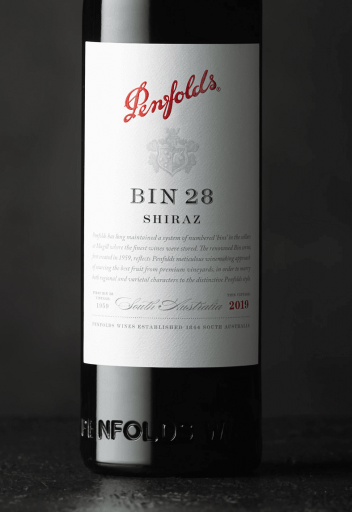
Penfolds Bin 28 Shiraz 2019 (A$50)
Ken Gargett – 92 Points
Originally, this wine came from fruit from the famous Kalimna vineyard, purchased by Penfold’s in 1945. The first vintage was 1959. These days, it is multi-vineyard and indeed, multi-regional – McLaren Vale, Barossa, Wrattonbully and Padthaway. A year in mature American oak hogsheads. Opaque colour, deep purple. At this early stage, this wine seems tighter and more closed than the 128. Black fruits, deeper and more concentrated, more chunky. Some soy sauce notes, truffles, warm earth. Good concentration. A wine looking for a big steak to match it, but be in no hurry – this has ten to fifteen years ahead. Good acidity and length. Real power, firm tannins. Really needs time in the cellar. Curiously, the longer it spent in glass, the more it seemed to go back into its shell. Time needed.
Jeni Port – 93 Points
Once known as Kalimna shiraz, the word Kalimna no longer can be seen on the label.cIt is a fully-fledged multi-regional blend these days: McLaren Vale, Barossa Valley, Padthaway, Wrattonbully. Despite the name change, the flavour rings true to past releases.
The dense red carries that sweet Aussie fruit imprint. American oak coconut ice – a defining feature – and black-fruited generosity arrive by the barrow-full. It’s bold and richly textured, which is just how Bin 28 drinkers like it. The style has been perfected since it was first made in 1959. No surprises here. Blackberry, cassis, pastille, coconut ice confection, black olives, licorice strap and spice. All up front and in your face a little, it’s warm-climate sourced and proud. No doubt about it. The 14.5% alcohol is equally warming and vocal. Earth, leather, pan forte bring a touch of savouriness and dried fruit intensity while blackberry, bitter chocolate and loaded spice do the rest as the wine rolls over the tongue. Tannins are pliable, rolling with the fruit and alcohol. Drink 2021 – 2036.
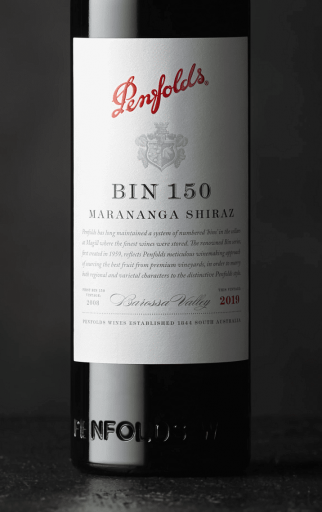
Penfolds Bin 150 Marananga Shiraz 2019 (A$100)
Ken Gargett – 95 Points
One of the stars of the Collection. From the Marananga sub-region in the Barossa. 12 months in oak. 61% in American hogsheads and puncheons (32% new, 29% one-year), 39% in French oak (9% new, 30% one-year).
Dense purple in colour. The nose explodes with lashings of chocolate, mocha, coffee beans, delicatessen notes, truffles and blackfruits. Some blueberries. So much going on here. Dry herbs and animal skins. Good complexity. Soy and sarsaparilla notes emerge. The oak has all but been soaked up by the fruit and is next to invisible. This is impressive. On the palate, the wine is seamless. Very good length. The balance between acidity, tannins and fruit is spot on. A silky finish and one which lingers beautifully. This is a wine which is undoubtedly appealing now but has another decade plus ahead of it. As we get towards the finish, black cherries emerge. The palate is a little more elegant than one expects, given the explosion of flavour from the initial aromas. Love it.
Jeni Port – 95 Points
The 2019 vintage – extremely dry and warm across the Barossa Valley – brings the perennially vibrant Marananga shiraz into its own. Never shy, it exudes the fruits of the summer with blueberry, black fruits and cherry wrapped around an Italianesque ferrous earthiness. The latter is an important feature of each release, a reference to the ancient Marananga ironstone and quartzite that lie beneath the vines.
Rather than subtle and poised, expect the full Penfolds experience combining smart, classy oak matched with ripe Barossan fruit concentration, and an almost in your face, glorious attack of cinnamon and Middle Eastern spices. Complexity is what this wine is all about. Marananga 2019 is in great form, the full Barossan sun of the vintage allows it to be itself, dense and generous across the palate. It fairly glides on and on across the finish line. And it tastes even better the second day! Drink: 2023-2035
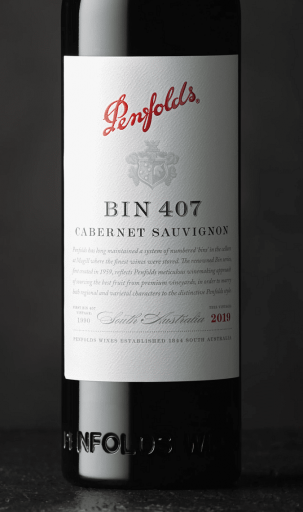
Penfolds Bin 407 Cabernet Sauvignon 2019 (A$110)
Ken Gargett – 90 Points
From Coonawarra, Padthaway, Wrattonbully, McLaren Vale and the Barossa. 12 months in French (27% new) and American (8% new) hogsheads. Dark red and purple edges. A mix of spicy oak notes and lots of berries, notably raspberries. Some earthy notes. Black olives, coffee beans. Not overly forthcoming at this early stage. An attractive supple texture. Mid-length, fresh acidity and a gentle fade. Notes of soy and sarsaparilla emerge near the finish. Some slightly splintery oak also on the finish. Absolutely nothing wrong with this wine but I still don’t really get it. If you are a fan, and there are plenty, go ahead.
Jeni Port – 95 Points
Is this a wine to rejuvenate the failing fortunes of Australian cabernet sauvignon? In its 29th release, Bin 407 steals the show, sets the pace with a fully energised, beautifully balanced young cabernet of class. It’s all the more significant because it’s from a warm-hot vintage across the regions where fruit was sourced. The Barossa Valley, for example, experienced 31 days of temperatures exceeding 35C.
A bright, punchy introduction of freshly picked black and blue berries, violet, dried herbs, a hint of clove. But it is the oak component – French (27% new) and American (8% new) – that shines because it’s fully integrated, balanced. It dares you to suss it out amid all of the ripe fruit goings-on. So dark, so fresh across the palate with black strap licorice, bay leaf, dried sage working in a matrix of super fine tannins. Drink: 2021-2035
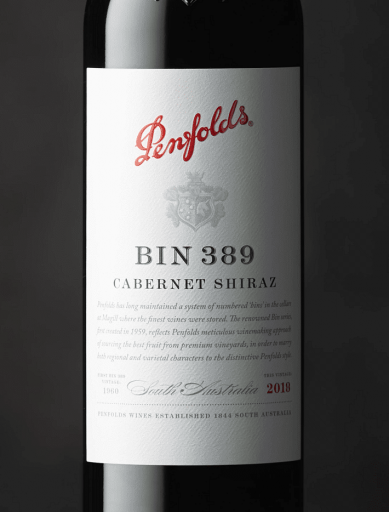
Penfolds Bin 389 Cabernet Shiraz 2019 (A$100)
Ken Gargett – 96 Points
389. Never ever lets you down. Sourced from Padthaway, McLaren Vale, the Barossa, Wrattonbully and Coonawarra, this vintage is 53% Cabernet and 47% Shiraz. 12 months in American hogsheads, a quarter of them new.
Dark magenta with a purple rim. Early days, of course, but this wine is already exhibiting more complexity than most. Warm earth, animal hide, truffles, dark chocolate, beautifully integrated oak, a hint of garden herbs and of a malty chocolate note. Such a gorgeous seductive character. Seamless and supple. Bright acidity in the background. The intensity is maintained on a very long finish. Silky tannins and plenty of them. Good concentration. This wine is so well structured and so impressively balanced. This is a 389 which offers a great deal now but so much more if you can put it away for a decade or two.
Jeni Port – 94 Points
Of all the traditional Penfolds Bin reds, 389 is the one that consistently year after year arrives ready to enjoy straight out of the blocks. It’s a winemaking masterclass in balance and integration of cabernet sauvignon and shiraz from multiple South Australian wine regions. In 2019, five regions provide the basic materials led by Padthaway and McLaren Vale. Usually more prominent, Coonawarra and the Barossa Valley come in last, an indication maybe of the summer heat waves that they endured.
If anything, the 389 a la 2019 is a little forward but it nevertheless comes fully formed resplendent in the scent of violets, sage, spiced black berries, licorice and fresh coffee grounds.
The percentage of new American oak has been pulled back a smidge to reveal a mere dusting of pencil shavings, vanillin overlay. It makes for an attractive background to the vibrancy of fruit. Dried herbs, blue fruits, black berries, earth are all tight and focused on a palate drawn tight by fine tannins. Drink: 2021-2039
Tony Love – 96 Points
A wine for Penfolds’ true believers. “Claret” for the modern era. Stating the case for multi-regional styling. This is fabulous from the first whiff, with so much going on in its complex expression that wafts from cabernet’s aromatic herbal notes then settle into the vintage’s savoury suggestions – some meatiness and charcuterie for instance – then mocha of course, and delicious little pokes of sweet plum bringing the shiraz fruit into focus. The synergy of the blend become singular, wrapped up in a mouthful of integrated tannins. All round excellence.
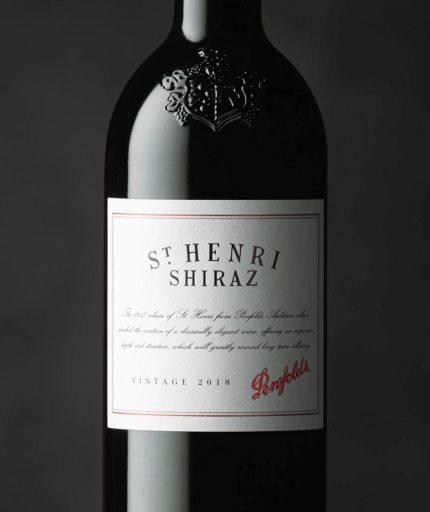
Penfolds St Henri Shiraz 2018 (A$135)
Ken Gargett – 99 Points
St Henri is, for me, one of the least consistent wines in the annual Collection. By that I mean, sometimes it absolutely soars above those around it. Other times, it just doesn’t seem to be able to get off the ground to the extent that such a much-loved and famous wine should. This vintage is sourced from the Barossa, McLaren Vale, Padthaway, Port Lincoln, Robe, the Clare Valley and the Adelaide Hills. 12 months in those fifty plus year-old vats.
For me, this is the wine of the entire release. An extraordinarily good St Henri and I could not encourage winelovers to fill their cellars with this wine more strongly which will comfortably sit with 2010 and 2012. I have no doubt that in years to come, it will be considered as one of the greatest St Henri’s ever made. It really is that good.
Colour is black and purple. The aromas kick off with cloves and black olives. Dark chocolate, mulberries, cassis, leather, hints of tobacco leaves, truffles, beefstock and blackberries. Power and concentration. What is not to love? Right on form. Complex, balanced, very long and generous. Abundant silky tannins. This is perfectly structured. Balance is the key. The balance allows the wine to exhibit Audrey Hepburn elegance and Arnie Schwarzenegger power. This has decades ahead. A great St Henri.
Jeni Port – 96 Points
St. Henri is always welcoming, a warm and familiar flavour that resonates almost without fail. There’s a soft generosity to the 2018, no doubt due to a warm-hot summer across the seven South Australian regions that contribute fruit to the blend.
Black cherries and berries, spiced stewed plums, licorice, turned earth. Has an old Australian dry red feel to it that’s mighty attractive, a reminder when reds were aged in old oak, in this case we’re talking 12 months in 50-year-old oak vats. It’s a slow-paced wine, of violet, aniseed, prune, leather and earth. Savouriness builds, tannins come to the fore as the wine moves across the tongue towards a long finish. So, so easy to enjoy right now. Cellar if you can. Drink: 2021-2040
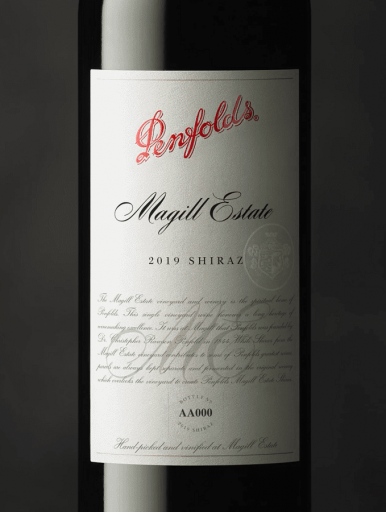
Penfolds Magill Estate Shiraz 2019 (A$150)
Ken Gargett – 96 Points
This small production, famous single vineyard Shiraz from Penfold’s always impresses, right since that first vintage back in 1983. Vinified in open fermenters and basket pressed in order that it might complete fermentation in barrel. 18 months in French (26% new) and American (6% new) hogsheads. Inky black with crimson rims. This is young, yet powerful and intense. Black fruits here. Spices, leather, dry herbs and a hint of cinnamon-y and nutty oak, if one looks, but the fruit matches it well. Good concentration. Black fruits and chocolate are intertwined throughout, with raspberry notes. A supple, generous palate belies the nose, which suggested that a more closed and solid experience might await. Very good length. Silky tannins, yet they provide good grip. Ten, twenty years ahead of it.
Jeni Port – 94 Points
Deepest purple in hue. Beetroot, earth, violet, black berries, touch of panforte open the wine. Penfolds winemakers admit the 2019 is at the riper end of the Magill spectrum with an alcohol of 14.5%, however, it must be said, that generosity suits the style. The lean-ness of the past could be confronting in some years. Which is not to suggest that the Magill structure of old is missing, it’s just the bones are better covered, fleshed out, this time around. Plums, dark cherry, a fresh-cut raspberry fruitiness moves in line with plenty of spice and chocolate. It plays out against a warm, textural background, aided and abetted by supple tannins and well-judged oak. Love the lift of sweet shiraz fruit towards the finish and the depth of promise that lies at the heart of this wine. Drink: 2021-2030
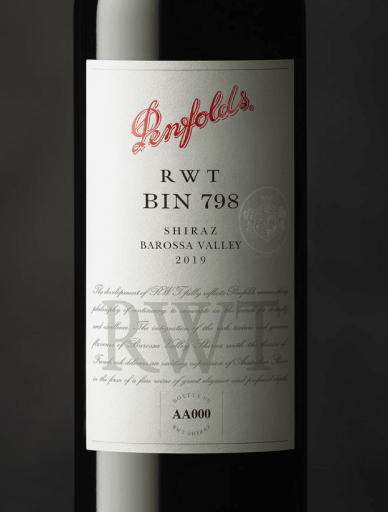
Penfolds RWT Bin 798 Barossa Valley Shiraz 2019 (A$200)
Ken Gargett – 95 Points
This version of Barossa Shiraz sees only French oak, while Grange is all American. To be exact, 18 months in French hogsheads, 57% new and 43% one-year-old. Black blue in colour with a purple edge. This has noticeable oak at the moment, to the extent that it embalms the fruit a little more than one would wish, but it is early days and this will surely resolve itself. Black fruits, coffee grinds, a hint of salami, mulberries, soy. Good intensity, but at the moment, too tightly wound, too closed. This needs a lot of time. More time than I can recall an RWT needing at this early stage. Still, if one can provide that time then the wait will be rewarded. Coiled power on the palate. Firm, quite solid tannins. Good length. For me at this stage, while it is obviously a very fine wine, it is a fractional one-dimensional. Even a touch chunky. But this is nothing that time will not resolve. Today, 95 for me, but no other wine in the Collection has more room for improvement.
Jeni Port – 95 Points
Penfolds winemakers work to a particular style with RWT. It has to be “opulent and fleshy,” a counter to Grange’s “muscular and assertive” ways. French oak with a high-ish degree of new barrels apparent has also been a feature of the wine since its launch with the ’97 vintage. And, so it continues in the 2019 release, although Penfolds watchers might note that at 57%, the level of new oak is slowly receding. Our taste for new oak is not what it was, and that’s a good thing.
A smooth operator, RWT impresses with its depth of Barossan intensity and shiraz fruit concentration. It’s packed tight from aroma to flavour with layers of dusty black berries, warm earth, sage and thyme, a touch savoury, too. But, above all, the wine is all about an abiding Barossa DNA: a boldness, density, with a lasting impact. Once, such a wine from Penfolds would have been dressed in American oak but under French oak the accent is more polished. It’s glossy and smooth, supple tannins running the line and length. The winemaker suggests a peak drinking window from 2025 to 2050. I think I would be calling it a little earlier, just to be sure. Drink: 2023–2040
Tony Love – 97 Points
Arguably the most dramatic of the collection’s releases this year, this shiraz is all stops out, turbo charger on, power chords played, yet with precision and accuracy delivering an exciting aromatic introduction then sustained and reverberating interest. Think the most enticing bakery smells of berry tarts, fruit cake, then flint (with a tiny lift of VA), morphing into the French oak influences of cedar, capers and sandalwood – all of which the Penfolds team has noted as well in their own tasting assessments. The matrix within the wine is what compels – complex yet intricate, full-bodied yet pliable and enticing. Indulgent yet convincing.
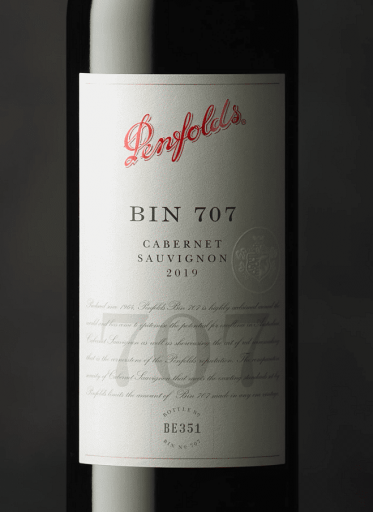
Penfolds Bin 707 Cabernet Sauvignon 2019 (A$650)
Ken Gargett – 98 Points
Sourced from McLaren Vale, Coonawarra, Barossa and Padthaway, 18 months in new American hogsheads. The colour is a dark maroon/red. Opens with attractive aromatics. Some oak, but the fruit is more than a match for it. Flavours emerge and weave throughout – chocolate, dark berries, bergamot, cigar box, soy, black cherries, dried herbs and some tobacco leaf. There is a hint of capsicum as well. Seamless. There is power here but everything is in the ideal balance. Such a well crafted wine. Focus, power and really serious length. Very fine tannins. The finish sees some juicy fruit emerge with the oak. A compelling Cabernet and one with decades ahead of it. Dense fruit but the structure carries it so well that the wine appears light on its feet. A truly superb 707.
Jeni Port – 98 Points
Even if you were tasting this wine blind, your first tasting note would have to be, WOW! The scent sets the scene beautifully. There is an inherent complexity here. And balance. Each individual component melding as one: aromatic florals, vanilla pod, red berries, fennel seed emerging across a line of lightly smoked charcuterie.
In its youth, there’s a cut and thrust of tannin (the cut, the former) and oak (the thrust, the latter) which puts a taut scaffolding in place for a long, long future. It combines McLaren Vale smoothness, Coonawarra black-hearted, tannic intensity with a Barossan sweet and savoury core and, while Padthaway also plays a small part, you have to say that the big three regions own this wine. Blackcurrant pastille, tapenade, smoky oak, red currant, forest floor, sage/mint and pliable tannins bend to the will of the whole. Bin 707 rarely looks so approachable, so young. Drink: 2023-2045
Tony Love – 96 Points
The Penfolds winemakers note quite clearly that the 2019 vintage across many of its wines has delivered what they call a “savoury cloak”, and here it is clearly exposed. Note too that this vintage is sourced out of four SA regions, McLaren Vale contributing 41% and Coonawarra 36%, with Barossa Valley and Padthaway adding the rest. In the first instance this cabernet is less exuberantly aromatic in the leaf and cassis fruit department than its Bin 407 sibling, and more to do with blue florals, black olives, with maritime notes of iodine and seaweeds. It’s 100% new American oak immersion is soaked right up so the sweeter chocolate and spice feels add a comfy familiarity. All that makes for a rich and powerful expression that encourages deep contemplation.
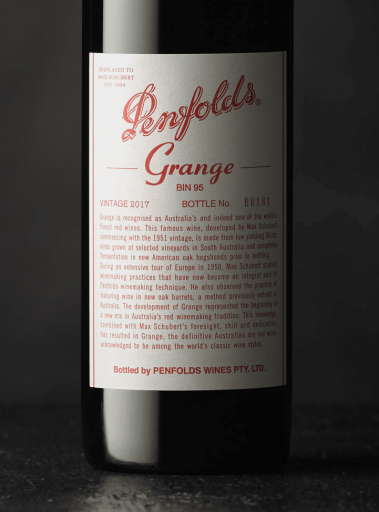
Penfolds Grange 2017 (A$950)
Ken Gargett – 97 Points
Only the 7th Grange ever to be 100% Shiraz, in 70 years. 18 months in 100% new American hogsheads. The fruit is sourced just from the Barossa and McLaren Vale. An inky opaqueness. Immediately obvious that this wine has that Grange DNA. Powerful oak notes, but integrating well. Coffee beans, soy, vanillin characters, spices, chocolate, bergamot and what seems to be the merest hint of orange rind in the oak. The fruit remains warm and welcoming. Black fruits, beefstock and some ripe raspberries. Real power here but it is seamless, balanced and very long. Good acidity. A lot of tannin – it may seem unobtrusive but it is there. The texture is delightfully supple. For me, this does not exbibit the finesse and focus seen in the very best Granges but it is certainly an extremely fine wine. Certainly a long life ahead of it, though perhaps not quite as long as some vintages. With time in the glass, more red fruits emerged.
Jeni Port – 98 Points
One of those Granges that is immediately appealing. Is this the result of a long ripening period across the Barossa and McLaren Vale, the sources of fruit? Who knows, but there is definitely a case for thinking this is one of the more charming Granges to grace the table.
Impossibly deep purple, dense and moves slow in the glass. The scent is less fruit-inspired, more complex-driven: tight and focussed, everything is dark and exotic and malty and muscular. The palate comes therefore as a bit of a surprise. The sweet fruit rises to meet your lips; the violets and florals, the blackberries, blueberries, macerated raspberries, panforte, and oh so beguiling spice.
The 2017 is all about shiraz – no cabernet to be seen – and so it goes off down a shiraz lane of smoothness and near opulence, well, opulence is a relative term in the Grange vernacular, especially so early in the game. And then the tight tannins arrive on the scene, bringing everything together firmly, resolutely. Of course, having said all of that I am not suggesting we break open a bottle this year. But you can be confident to do it well before it reaches 10. It’s one hell of a charmer. Drink: 2025-2055
Tony Love – 98 Points
A cooler than average season in this vintage’s two source regions, Barossa Valley and McLaren Vale, has resulted in a more aromatic Grange than usual, which adds to its already established complex expression. We see here meaty and herbal elements rising to the fore in a rich, gastronomic style with plenty of Grange character on show: formic notes, subtle VA, dark soy and licorice with vanillin oak integration, while the mouthfeel is most appealing, the expected tannin coating delicately integrated. One of the most immediately accessible and drinkable Granges upon release in recent memory.
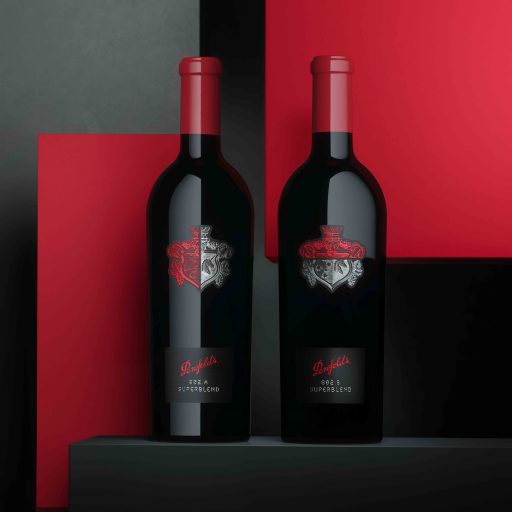
Penfolds Superblend 802-A Cabernet Shiraz 2018 (A$900 – released 5th August 2021)
Ken Gargett – 93 Points
802-A spent its time in American oak, 22 months, 100% new. The blend is 68% Cabernet and 32% Shiraz, with the components blended after maturation. Opaque colouring with vibrant purple on the rim. There is oak here. Vanillin notes, good concentration. Chocolate, black fruits, leather, mulberries and cloves, but for me, at this stage, the oak is too dominant. The wine is powerful and dense. There is length but the flavours are very much upfront and there was not the anticipated intensity on the finish. Curious. There is obviously both quality oak and fruit, but it has not come together in the way one might expect. Time might solve some issues, though I remain, shall we say, not completely convinced. I must confess I was expecting better.
Penfolds Superblend 802-B Cabernet Shiraz 2018 (Released August 2022)
Ken Gargett – 97 Points
19 months in French hogsheads, 54% new and 46% one-year-old. The blend is 55% Cabernet and 45% Shiraz. These components were combined immediately post vintage. This is more like it. Black fruits, soy, spices, beef stock, chocolate and more importantly, the oak is far less dominant. The wine benefits from this and the texture is more supple, the wine more seamless. It is fresher, more finesse and better balanced. Good intensity and length. Good acidity here and very fine tannins. This should age and improve for two decades at least. This is by far the most convincing of the pair.

